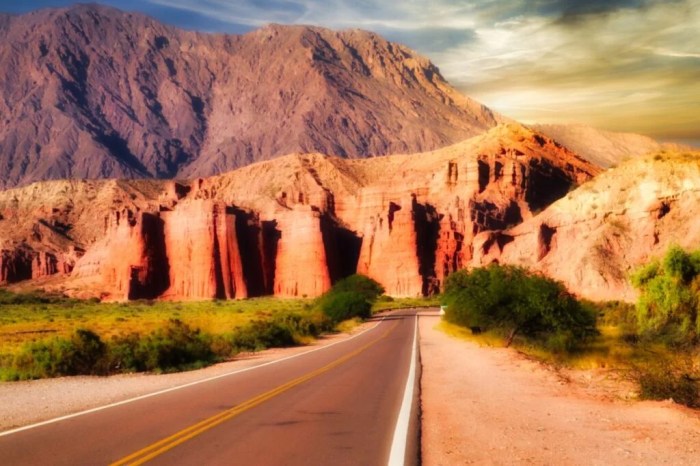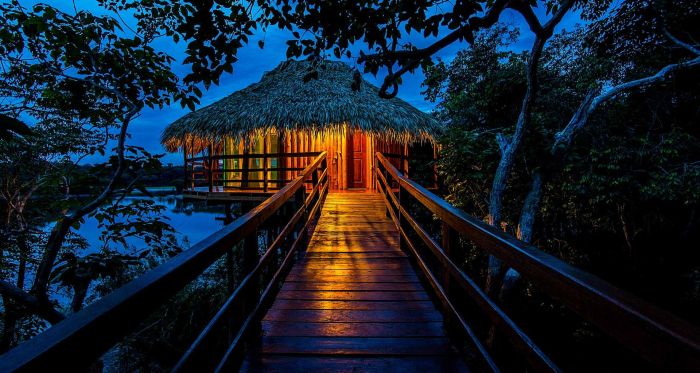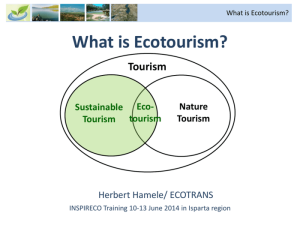
Embark on a journey through the breathtaking landscapes of South America with Ecotourism Tours, where nature conservation meets adventure. Discover the wonders of this diverse continent while making a positive impact on local communities and wildlife.
Ecotourism
Ecotourism is a form of sustainable travel that focuses on exploring natural environments while respecting and preserving them. It involves responsible travel to natural areas that conserves the environment, sustains the well-being of the local people, and involves interpretation and education.
Importance of Ecotourism
Ecotourism plays a crucial role in preserving natural environments by promoting conservation efforts, supporting local communities, and raising awareness about the importance of biodiversity. By engaging in ecotourism activities, travelers contribute to the protection of fragile ecosystems and wildlife habitats.
- Ecotourism helps to reduce the negative impacts of traditional tourism on the environment, such as deforestation, pollution, and habitat destruction.
- It provides economic incentives for conservation by generating revenue for local communities and organizations involved in environmental protection.
- Ecotourism promotes cultural exchange and understanding between visitors and locals, fostering respect for diverse traditions and lifestyles.
Examples of Ecotourism Activities
Ecotourism activities focus on sustainability and environmental conservation, offering travelers unique experiences in natural settings while minimizing their ecological footprint.
Some examples of ecotourism activities include bird watching tours in the Amazon rainforest, guided hikes in national parks to observe wildlife, sustainable agriculture workshops on organic farms, and snorkeling trips to coral reefs with a focus on marine conservation.
Ecotourism Tours in South America

South America offers a plethora of unique ecotourism opportunities for nature enthusiasts and adventure seekers alike. From lush rainforests to diverse wildlife, this continent is a paradise for those looking to immerse themselves in the beauty of the natural world.
Popular Destinations for Ecotourism
South America is home to several popular destinations that attract ecotourists from around the globe. Some of the must-visit places include:
- The Amazon Rainforest: Known as the lungs of the Earth, the Amazon Rainforest is a biodiversity hotspot teeming with unique flora and fauna. Visitors can embark on guided tours to explore the dense jungle and spot exotic wildlife.
- Galapagos Islands: Located off the coast of Ecuador, the Galapagos Islands offer a one-of-a-kind eco-adventure experience. Visitors can witness the iconic giant tortoises, marine iguanas, and blue-footed boobies in their natural habitat.
- Pantanal Wetlands: Situated in Brazil, the Pantanal is the world’s largest tropical wetland area. It is a haven for birdwatching, jaguar spotting, and experiencing the rich biodiversity of the region.
Impact of Ecotourism on Local Communities and Wildlife Conservation
Ecotourism plays a crucial role in supporting local communities and wildlife conservation efforts in South America. By promoting sustainable travel practices and responsible tourism, ecotourism helps generate income for local residents and preserves the natural ecosystems.
Additionally, ecotourism creates awareness about the importance of conservation and environmental protection among visitors, fostering a culture of respect for nature and wildlife. By engaging in eco-friendly activities and supporting conservation projects, ecotourists contribute to the preservation of fragile ecosystems and endangered species.
Sustainable Practices

Ecotourism tours in South America often prioritize sustainable practices to minimize environmental impact and support local communities. By implementing eco-friendly accommodations, transportation, and engaging with local communities, these tours aim to protect the natural and cultural resources of the region.
Eco-friendly Accommodations and Transportation
In South American ecotourism, accommodations range from eco-lodges nestled in the rainforest to sustainable boutique hotels in remote areas. These establishments are built with environmentally friendly materials, utilize renewable energy sources, and implement water conservation practices. Additionally, transportation options include electric vehicles, bicycles, and eco-friendly boats to reduce carbon emissions and minimize ecological footprint during tours.
Role of Local Communities
Local communities play a vital role in promoting sustainable ecotourism practices in South America. They are often involved in guiding tours, providing authentic cultural experiences, and sharing traditional knowledge with visitors. By engaging with local communities, ecotourism tours contribute to the preservation of indigenous cultures, support local economies, and raise awareness about environmental conservation efforts.
Biodiversity and Conservation
South America is known for its incredibly rich biodiversity, with a wide variety of ecosystems ranging from the Amazon Rainforest to the Andes Mountains. This region is home to a vast array of plant and animal species, many of which are unique to this part of the world. The diverse landscapes and climates provide habitats for countless species, making South America a hotspot for biodiversity.
The Importance of Conservation Efforts
Conservation efforts in ecotourism destinations play a crucial role in preserving the unique biodiversity of South America. By promoting sustainable practices and responsible tourism, these efforts help protect the natural habitats of various species and prevent further degradation of the environment. Conservation initiatives also aim to raise awareness about the importance of preserving biodiversity and the role that ecotourism can play in achieving this goal.
Success Stories in Biodiversity Conservation
One notable success story of how ecotourism has contributed to biodiversity conservation in South America is the case of the Galapagos Islands in Ecuador. Through strict regulations and sustainable tourism practices, the Galapagos National Park has been able to protect the fragile ecosystems of the islands and the unique species that inhabit them. Tourists visiting the Galapagos contribute to conservation efforts through park fees and educational programs, which help fund research and protection initiatives. Another example is the Tambopata National Reserve in Peru, where ecotourism has supported conservation projects aimed at preserving the rainforest and its wildlife.
By providing economic incentives for local communities to protect the environment, ecotourism has helped reduce deforestation and illegal wildlife trade in the region. In both cases, ecotourism has demonstrated how responsible tourism can benefit biodiversity conservation by generating income for conservation projects, raising awareness among visitors, and promoting sustainable practices that minimize the impact on the environment.
As we conclude our exploration of Ecotourism Tours in South America, remember that every trip taken with a sustainable mindset contributes to the preservation of our precious ecosystems. Let’s continue to travel responsibly and protect the natural beauty of this region for future generations to enjoy.
Essential Questionnaire
What makes ecotourism different from traditional tourism?
Ecotourism focuses on preserving natural environments, supporting local communities, and promoting sustainable practices, while traditional tourism may have a more negative impact on the environment and culture.
Which South American countries are known for their ecotourism opportunities?
Countries like Costa Rica, Ecuador, Peru, and Brazil are popular destinations for ecotourism in South America due to their diverse ecosystems and conservation efforts.





